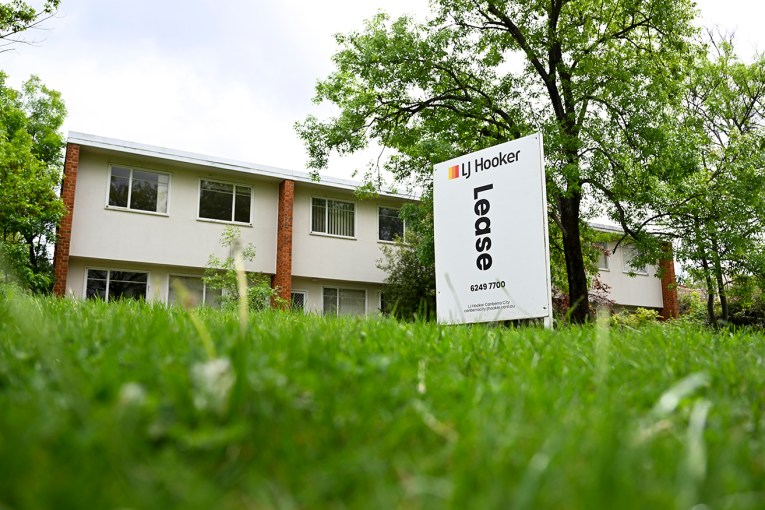More people are struggling with mortgage repayments


Mortgage arrears are climbing. Photo: Getty
Stress cracks are starting to appear in the housing market with mortgage delinquencies rising to the highest level in three years. And in some states the number of people falling behind on payments has reached record levels,
The figures come from research produced by ratings agency Moody’s Investor Services and demonstrates that, despite record low interest rates, home buyers are facing an increasingly impossible stretch.
“The proportion of Australian residential mortgages that were more than 30 days in arrears rose to 1.50 per cent at 31 May 2016 compared to 1.34 per cent at 31 May 2015,” the report found. The agency warned investors that “the increase raises the risk of mortgage defaults and is therefore credit negative”.
WA, Tasmania and the Northern Territory have been hardest hit as their incomes have declined with the end of the mining boom. Delinquency rates there “climbed to the highest levels since our records began in 2005, while in South Australia, the delinquency rate was just 0.1 percentage point below the state’s record-high reached in April 2013”, Moody’s said.
 WA fared the worst with the delinquency rate increasing 0.69 percentage points to 2.33 per cent. In the epicentres of the housing boom, NSW and Victoria, things deteriorated, but more slowly.
WA fared the worst with the delinquency rate increasing 0.69 percentage points to 2.33 per cent. In the epicentres of the housing boom, NSW and Victoria, things deteriorated, but more slowly.
Victorian arrears rates rose 0.08 percentage points to 1.4 per cent, while NSW saw delinquency up 0.04 percentage points to 1.05 per cent, the country’s lowest outside the public service bubble of the ACT.

Here’s the delinquency deal (click to expand).
The fragility of the housing equation has been underlined by Moody’s research which highlights the yawning gap between income and house prices.
Home prices in Australia have risen 30.69 per cent over the three years to 31 August 2016 while average weekly earnings have increased only 5.06 per cent.
“The large differential between home price and wage growth – particularly in Sydney and Melbourne where home prices have increased the most – means that households have had to take on more debt to fund home purchases,” Moody’s warned.
Regulators look worried
The prospect of cracking what looks like an increasingly fragile property market has regulators worried and seemingly fearful about interest rate rises. The Australian Prudential Regulation Authority (APRA) recently delivered the banks what looks like a ‘get out of jail free’ card with its implementation of international rules around balanced funding.
The definition of the newly introduced Net Stable Funding Ratio, a measure designed to ensure banks rely more on deposits and less on volatile international bond markets for their funding, has been watered down by APRA in recent times.
Initially, APRA’s definition would have seen banks dramatically boost their reliance on customer deposits to fund their mortgage lending. But this reliance has been reduced by the final definition of the ratio, released after consultation with the banking industry, taking a less hardline stance against some assets.
“In particular, APRA has modified its proposed required stable funding for certain self-securitised assets and certain higher quality liquid assets in offshore jurisdictions,” the regulator said.
That means the change “will lift funding costs a little. But we will not see the strong hikes we were expecting to see three months ago”, analyst with Digital Finance Analytics, Martin North, told The New Daily.
It’s mortgage rates, stupid
Had that original hike taken place then mortgage rates would have risen on the back of hikes in deposit rates. And that is a much greater danger to the property market than the moderate rises in unemployment in the mining states.
“Those rises in mortgage arrears are not something we need to worry too much about at this stage. We would have much more to worry about if interest rates started to rise,” said Nicki Hutley, chief economist with Urbis group.
The fragile cocktail of rising house prices and ballooning personal debt levels has another ratings agency, S&P Global, worried. It has cut the ratings outlook from stable to negative on 25 Australian financial institutions, largely due to growing risks from the housing sector.

Household debt growth.
Those hit include larger institutions – such as AMP Bank, Macquarie, Bendigo and Adelaide, and Bank of Queensland – through to smaller credit unions, building societies and mutual banks.
“In our opinion, economic risks facing all financial institutions operating in Australia are rising due to the strong growth in private sector debt and residential property prices in the past four years, notwithstanding some signs of moderation in growth in recent months,” S&P said.








